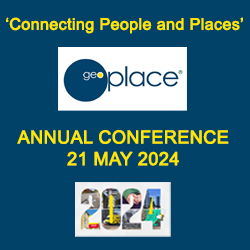Guest opinion: Georgina O’Toole, chief analyst of TechMarketView, argues that the public sector is not immune to ‘digital chaos’
Over the past few weeks, there has been much reason to contemplate the progress being made in UK government digital transformation.
It has been the subject of numerous debates and publications. Most notably, Parliament’s Science and Technology Select Committee published its report into digital government, highlighting its belief that the implementation of the Government’s digital strategy had “lost momentum”.
In addition, last month the Government Digital Service (GDS) published the Government Technology Innovation Strategy. Within that report, there was a clear drive to take digital transformation to the next level, by enabling public sector organisations to join up more effectively.
Meanwhile, TechMarketView published its latest UK Software & IT Services Market Trends & Forecasts 2019-22 report, which introduced the concept of ‘digital chaos’. We believe applies across all industries, whether in public or private sector.
Anarchic environment
It is our view that several years of early digital development have been undertaken in an anarchic environment. It was intended to encourage innovation and the faster adoption of digital technologies. It decentralised ICT and digital development and gave line of business and end users more control. The introduction of cloud services made the approach more feasible, providing a wider range of people with the tools to develop applications more quickly, experiment and innovate.
In government, the early approach to digital development was highlighted by the remit of the GDS when it was created in 2011: to save money, centralise information via a single website, and improve the user experience. This drove a focus on point solutions, particularly at the front end, and an unhealthy obsession with websites and e-forms.
The majority of citizens would have noticed an improvement in the way they interact with government. Most people have limited contact with public sector organisations, using them to: renew a passport, driving licence, or vehicle tax; check which day their bins are being collected or report a missed collection; and to pay their council tax. It is true that interactions like these have become far easier.
Simple digital beginning
However, this phase – which we refer to as ‘simple digital’ – stopped before it achieved two things. It didn’t achieve true transformation of government processes; in most cases it merely placed a digital sticking plaster over the legacy ICT. And it didn’t attempt to support some of the most complex citizen interactions with government – those that are used by the minority, but often the most vulnerable, in our society.
The past few weeks has opened my eyes to this. My youngest son (now 10) was born with a left leg deformity. As soon as he was born, I was faced with the lack of integration and failure to share information between different areas of the NHS. Everywhere I went – whether it be to the health visitor to have him weighed (with a plaster cast on his leg) to the GP – I ended up having to repeatedly explain everything about his condition. Reliving everything when it was still so raw was difficult.
As the years have moved on, communication around the hospital is just starting to get better with the introduction of a new e-patient record (EPR) system. But despite drives towards greater interoperability in the NHS, communication beyond the walls of the hospital remains poor.
We have just made the difficult decision to have his leg amputated – a procedure undertaken at GOSH (Great Ormond Street Hospital) but requiring multiple other organisations to be involved – including the GP for pain relief and Queen Mary’s hospital for prosthetics and rehabilitation.
It is us, the parents, who are passing information to each service provider. This has included an increase in dosage of his medication for phantom pains was not communicated to the GP; Queen Mary’ Hospital in Roehampton were unaware of the full details of procedures undertaken at GOSH. Those are just two examples.
Worst experience
But the worst experience of all is with applying for disability living allowance (DLA). For me it sums up how digitally immature the UK remains. The form for DLA is over 70 pages long. It can be filled in online but then it must be printed out and sent in manually. It is, in reality, easier to fill in by hand. BUT more importantly it is a form that shouldn’t be so hard and, as other parents agree, so emotional to fill in.
Most of the information is already available across the various public sector organisations with whom we have had contact. Information such as ‘Who is his GP? Which other healthcare providers does he have contact with?’ should be recorded centrally. Then we are asked: ‘What medication is he on?’ (Will be on the GP system); ‘Is he having counselling? (The referral should be available on the GOSH system); ‘What adaptations does he require round the house and how much help does he need?’ (The occupational therapists will have a record).
If data was shared between healthcare and other public sector organisations, there would be no need for the applicant to provide the information. Not only would it make the process far less traumatic for those going through it, it would also reduce the likelihood of somebody fraudulently claiming support.
Moreover, it would eliminate the need for so many face-to-face checks and assessments to be done – because the information would have already been verified by government employed healthcare professionals.
Question for future
Recently I sat on a panel debate at Fujitsu World Tour. The exam question was: What is the future of citizen services?
To answer that question, we really have to determine, first, how far we have come. Findings from the Science and Technology Committee (in 2019), as well as thinktank Reform (in 2018) and the National Audit Office (in 2017 – see Government Digital Service: Priorities askew) were all pretty similar, i.e. highlighting that government silos remained and action should be taken to enable data to be shared across the public sector.
With this in mind, it is a little surprising that the UK Government has retained its top four position in the UN e-Government survey, albeit dropping down from its top spot over the last three years, to be overtaken by Denmark, Australia, and South Korea. It is also surprising to see that while Estonia is held up by many in UK Government as the bastion of digital government, it sits at number 16 in the same rankings.
It really highlights how difficult digital progress is to measure. The UN survey measures the adequacy of telecoms infrastructure; the ability of human resources to promote and use ICT; and the availability of online services and content. But just like the Government’s own Performance Dashboard, such measures fail to take account of progress in end-to-end digitisation. It is this end-to-end digitisation that Estonia has achieved.
Uphill struggle
To achieve the utopia of Estonian digital government – defined by a unique citizen identifier, citizen ownership of data and data use consent, and data sharing – will involve an uphill struggle in the UK. Ironically, the phase – over the last decade or more – that we refer to as ‘simple digital’, has actually resulted in more of a quagmire to wade through. We face a more disorganised ICT estate that requires a degree of order to be restored.
That is without yet getting close to achieving the digital nirvana of cross-boundary (cross-functional, cross-departmental, cross-business unit) data flows. These would bring the greatest value to organisations but also take us into the realms of what we refer to as ‘complex digital’ – the type of progress that would improve the process of applying for, verifying, and paying out a variety of benefits to the sick, the disabled, the unemployed, making it both more efficient for government and an easier process for the citizen.
Two levers
The Science and Technology Committee report zones in on two levers for digital transformation: technology and data. We have seen far more focus on the former – with initiatives set up to encourage the adoption of emerging technologies, such as artificial intelligence and machine learning. The issue is that, without a focus on the latter, we risk adopting newer technologies at too fast a pace, before we have enabled access to the right data and the cleanest data.
If we move too quickly, we are likely to worsen the situation – without clean data we will make mistakes. And that is a dangerous situation if we are using AI to make decisions that impact peoples’ lives or to create policy that impacts society.
There are many potential barriers to the acceleration of digital government in the UK, all of which have been mentioned in the Science and Technology Committee report: lack of leadership, a shortage of digital skills, fragmented responsibility for cyber security, complex procurement procedures. But it appears to me that the biggest barrier of all is this lack of understanding of government data, its ownership, how to share it, and how to best drive value from it.
Unanswered questions
Though the data issue is ofent mentioned, we rarely move beyond asking the right questions. Government continues to try and recruit a chief data officer. Organisations are popping up left, right and centre trying to solve the complex issues. The Centre for Data Ethics and Innovation (CDEI) within the Department for Digital, Culture, Media and Sport (DCMS), and the Ada Lovelace Institute, the independent body aiming to ensure data and AI work for people and society, have only recently been formed. The Information Commissioners’ Office (ICO) has seen some of the biggest changes in its remit and an expansion of its enforcement powers.
At the back end of last year, an event involving the British Academy, Royal Society, and techUK – entitled Data Ownership, Rights, and Controls – raised some pertinent questions but came nowhere near having the answers. It might seem common sense to many that citizens should own their own data, but should the individual always have the final say if by sharing that data would have a wider societal benefit? How do you define ‘your data’, when much of it, e.g. genetic data, will reveal information about others? How does a data owner get all the information it requires to agree usage consent? And can they really understand how their data is being used if deep algorithms are in play?
Crucially to me, how do we ensure that we don’t spend our entire lives reviewing and responding to consent requests? There are alternatives to consider like ‘data control’ and ‘data rights’, which would agree boundaries of wider consent without a need for a ‘yes’ or ‘no’ each time. But we are a long way from agreeing the legislative frameworks that would allow this to happen. The ICO has only just launched a consultation aimed at putting a new data sharing code of practice in place.
There are several suggestions on the table to move the data agenda forward. For example, the Science and Technology Committee recommends an audit of data use in government by winter 2020 ahead of the National Data Strategy launch. It also recommends a ministerial digital champion in every department by the end of 2019.
Along with these it advocates spending control (stick) and funding (carrot) levers to encourage cross-departmental collaboration. In addition, the Government Technology Innovation Strategy has sought to enable public sector organisations to join up more effectively where there is a shared aim or objective.
However, the GovTech Catalyst, overseeing a £20 million fund and set up to “challenge how public sector bodies take advantage of new and emerging technology”, appears focused mainly on goals that require limited data sharing. It highlights that, with the current state of play, more complex digital challenges are still considered too hard.
Lack of trust
Importantly, I believe there is an issue that isn’t mentioned in any of the recent reports, reviews or publications. We hear a lot of talk about citizens’ lack of trust in government when it comes to taking responsibility for their data. But there is a deeper issue: the lack of trust between public sector organisations. Without that trust, enabling data sharing will be pointless. The data has to be trusted, and used, once it is shared.
I go back to my personal experience. As an example, a hospital refers a patient to the wheelchair service, which then carries out its own assessment of the needs of the patient. You have to question: why does the wheelchair service not trust the opinion of the healthcare professional? It is an attitude endemic across the system, because the public sector does not act as one public sector, it acts as multiple independent organisations.
The issue is that, unless we knock down this cultural barrier, public sector organisations will continue to feed the digital chaos by developing digital solutions within their boundaries.
The worry is that the short termism of government, encouraged by the political cycle, will prevent anyone tackling an issue that could take tens of years to resolve. A cross-boundary approach will need a radical rethink of how the public sector is currently organised, managed and funded.
With that unlikely to happen, it’s time that the public and private sectors seek a different way to collaborate, and cut through the political and cultural barriers, so that we can tackle some of our most pressing, but most complex, core public sector challenges.
This article was first published in TechMarketView’s UKHotViewsExtra service. Subscribers to TechMarketView can read more about the impact of digital chaos on the UK software and IT services market – both in the public and private sectors – in the company’s latest major report: UK Software and IT Services Market Trends & Forecasts 2019-22.
If you want more information on how to subscribe to TechMarketView’s research, gaining access to more insightful analysis, you can contact Deb Seth at [email protected].
If you are a public sector organisation, you are eligible to become a member of our Tech User Programme (TUP), designed to support the end user community with their digital transformation and technology agendas by taking advantage of our knowledge and expertise in this sector. Please contact Deb Seth to find out more.
Image by Mark Say





